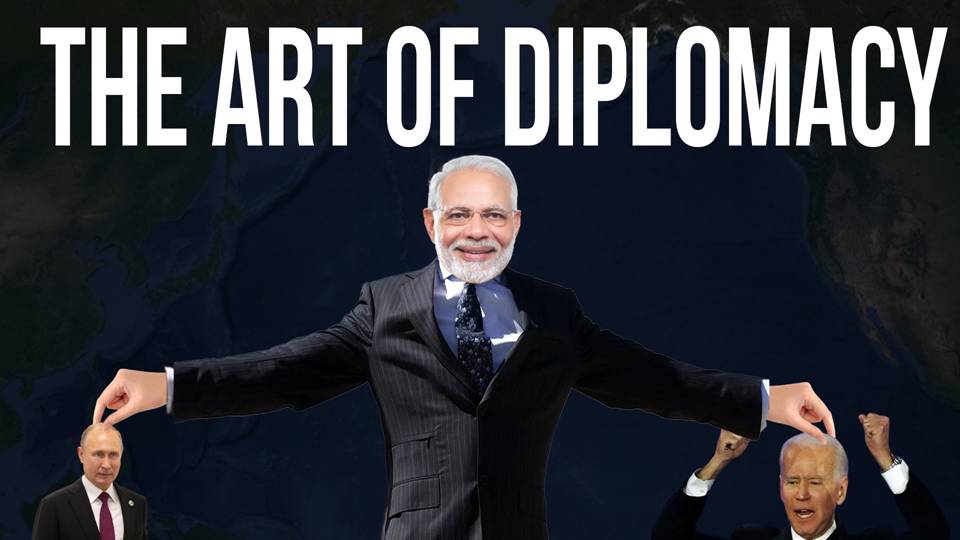If you want to understand American Diplomacy in simple words, here they are. America collaborates with every country only on grounds which it can profit from. Now, India is undoing the gains made by the US in the last few decades. It has shown its mettle be mollifying a grumpy United States.
Drones negotiation in final stages
According to reports available in the public domain, soon India will be buying 30 advanced drones from the United States. Apparently, negotiations are in advanced stages. The main reason why a speculation about finalisation of the deal is rife is that now the US government has put its hands into the negotiations. Earlier, General Atomics Global Corporation, which makes these MQ-9B drones, was the face of the deal from America’s side.
Vivek Lall, Chief Executive of the US Drone maker company said, “We understand that the MQ-9B acquisition programme is at an advanced stage of discussion between the US and Indian governments. Any questions on those discussions should be addressed specifically to the respective governments. From a company perspective, General Atomics is ready to support India and values our longtime relationship,”
Extremely potent weapon
MQ-9B is one of the most lethal drones available in the international market. It is a variant of the MQ-9B reaper which was used to kill Ayman al-Jawahiri last month. They are equipped with air-to-surface missiles. These drones can remain in flight for 35 hours and are effective in doing an aerial survey of border areas through their high-resolution cameras. Additionally, they can also attack the enemy whilst surveilling enemy positions. This is the reason why it is sometimes termed as hunter killer drone.
In waters, its variant SeaGuardian can carry out maritime surveillance, anti-submarine warfare and over-the-horizon targeting. In India, the Indian Navy is well aware of its capabilities. In 2020, it had taken 2 MQ-9B on lease for surveillance in the Indian Ocean. Our Navy used it for 3,000 hours for maritime and land border patrolling in 14 million square kilometres.
US does not want to be left behind
But, the question is why the US government felt the need to get actively involved in the process? It is being reported that the US government brought up the topic during the fourth two-plus-two foreign and defence ministerial dialogue.
Part of the answer lies in the fact that the deal worth 22,000 crore was in doldrums earlier this year. Reports had emerged indicating that instead of relying on US-made drones, India would focus on upgrading the Israeli Heron drones, adding more lethality to it.
US signed a slew of deals with India
This is just the tip of the iceberg The United States military-industrial complex is hell scared of losing the Indian market to Russia and India’s Defence aatmanirbharta campaign. That is why the United States is trying to keep India under its sphere of influence. In 2016, Obama administration designated India as a ‘Major Defence Partner’, in the same year; the US signed the Logistics Exchange Memorandum of Agreement (LEMOA) with India.
2 years later, both countries signed COMCASA (Communications Compatibility and Security Agreement) paving the way for US companies to sell high end technology to India. The next step in Defence cooperation was BECA (Basic Exchange and Cooperation Agreement) in 2020.
India has kept the USA on tenterhooks
But, in spite of so many government level deals, the US was not able to make headwinds in India. In 2021, it was reported that India’s arms imports were down by 33 per cent over a 5-year period. Even in the reduced import dependence, India relied more on Russia than the USA. S-400 deal and diplomatic Samudra manthan around it highlights India’s preference for Russia.
At the end of the day, the United States had to accept that they can’t dictate Indian policies. Uncle Sam was forced to provide a CAATSA waiver to India for the S-400 deal. Rest of the damage to US’ ego was done by India’s uptight stand during the Ukraine-India skirmish. In spite of both active and passive threats from the US and its allies, India kept cooperating with Russia. It did condemn the war, but did not take sides, which the USA wanted.
The message was clear. The USA realised that India is creating a polarity of its own and it holds more moral stature than any country. Siding with India became a trend and the opportunistic USA always goes with the trend.
Support TFI:
Support us to strengthen the ‘Right’ ideology of cultural nationalism by purchasing the best quality garments from TFI-STORE.COM
